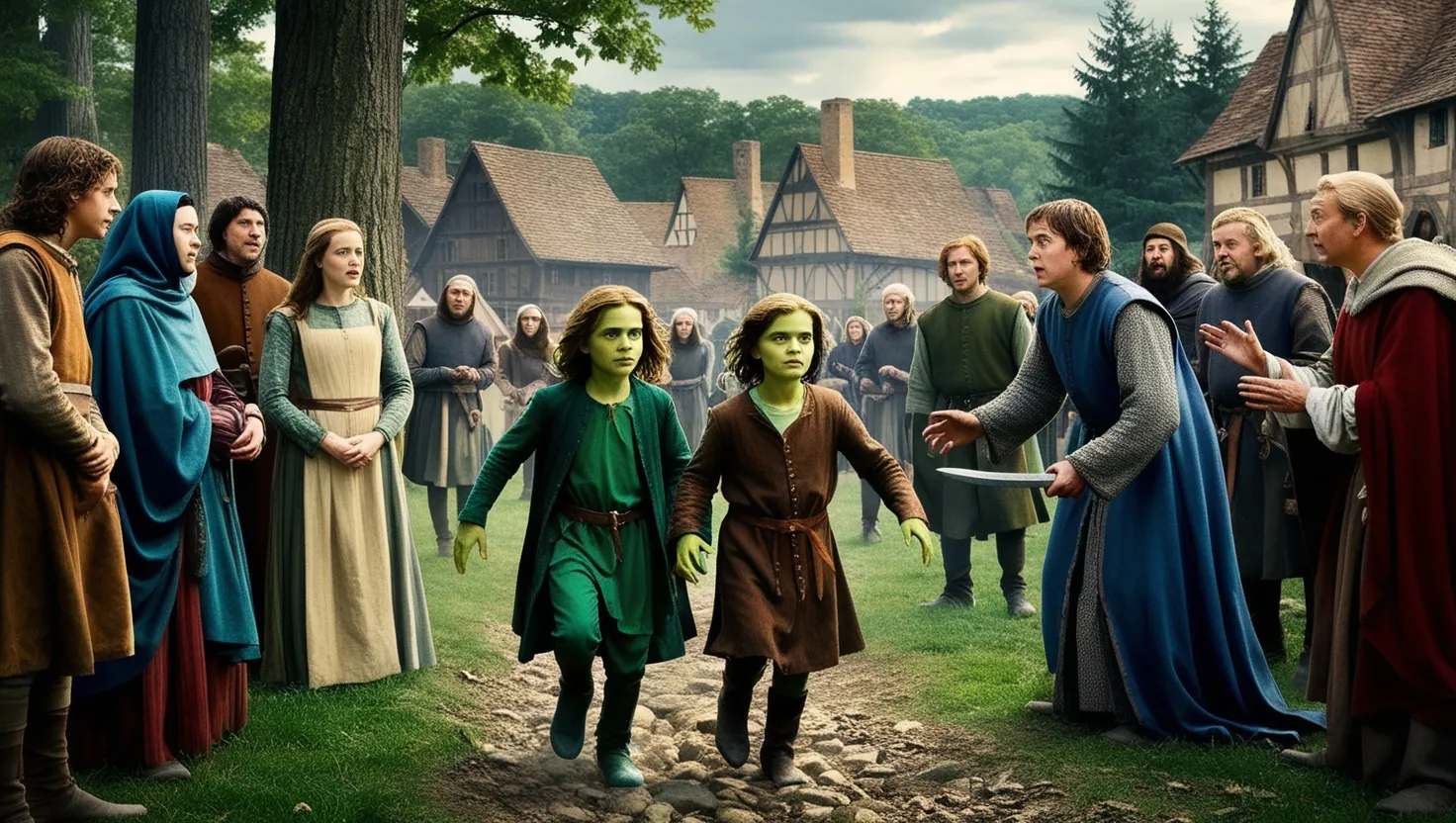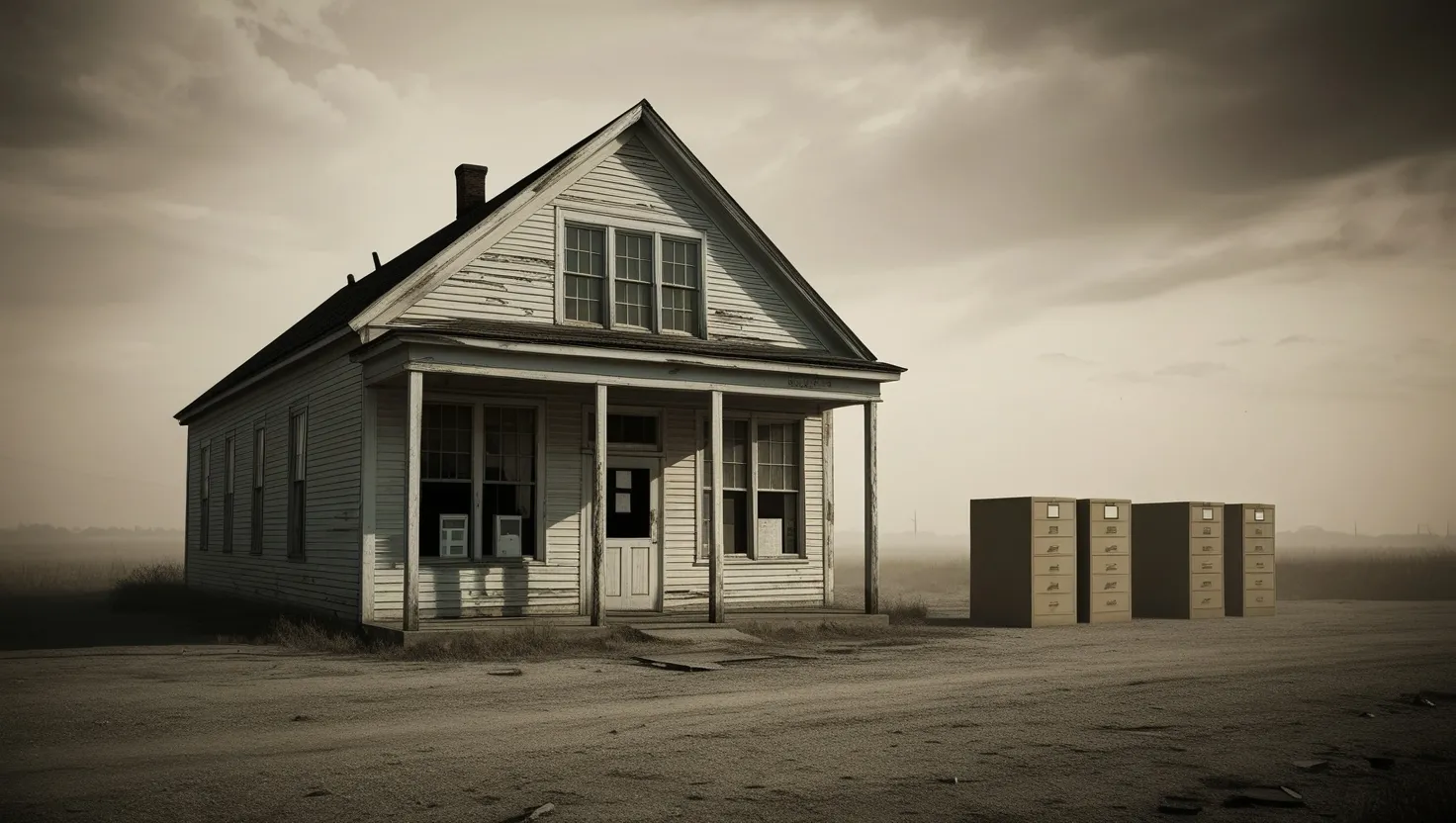In the heart of 12th century England, a tale that has captivated imagination for centuries unfolded in the quaint village of Woolpit, Suffolk. It was a time of turmoil, marked by the reign of King Stephen and the period known as “The Anarchy,” yet it was here that two children with an otherworldly appearance emerged, sparking a mystery that continues to intrigue us to this day.
Imagine walking through a field on a typical harvest day, only to stumble upon two young children with skin as green as the beans they would later devour. This was the reality for the villagers of Woolpit, who found these children beside an old wolf pit, a relic of the village’s namesake. The children spoke in a language no one could understand, and their behavior was as bewildering as their appearance.
The Initial Encounter
The children’s refusal to eat anything but raw green beans was one of the first peculiarities observed by the villagers. It wasn’t until they were taken to the home of Sir Richard de Calne that their eating habits became somewhat understandable. Here, they discovered green beans in the garden and ate them voraciously. This simple act of eating beans seemed to be a turning point; gradually, they began to adapt to other foods and their green skin started to revert to a normal color.
A Glimpse into Their Past
As the children learned to speak English, they revealed a story that was as fantastical as it was mysterious. They claimed to be from a land called St. Martin’s Land, a place where the sun never shone and the light was akin to perpetual twilight. Everything in this land, they said, was green, and a luminous country was visible across a considerable river. The girl, who would later be known as Agnes, described how they had been herding their father’s cattle when they heard a loud noise, similar to the chiming of bells, and suddenly found themselves in the fields of Woolpit.
Theories and Speculations
The story of the green children has spawned a multitude of theories over the centuries. One of the more practical explanations suggests that they might have been descendants of Flemish immigrants who were persecuted during King Stephen’s reign. Lost and alone, these children could have ended up in Woolpit, speaking only their native Flemish, which the villagers mistook for gibberish. The green tint to their skin could be attributed to malnourishment or a condition known as “green sickness.”
However, not everyone is satisfied with such mundane explanations. Some propose that these children were interdimensional visitors or even extraterrestrial beings. While these theories may seem far-fetched, they add to the allure of the mystery, inviting us to consider the boundaries between our reality and the unknown.
Medical and Folkloric Perspectives
Recent studies have delved into possible medical conditions that could explain the children’s green skin. Chlorosis, a condition caused by iron deficiency, or arsenic poisoning are among the suggestions. These explanations, while plausible, do not fully capture the essence of the story. The green children are more than just a medical anomaly; they represent a convergence of folklore, history, and the unexplained.
Local folklore and political allegories of the time also offer interesting perspectives. The story could be seen as a metaphor for the tumultuous times in which it occurred, with the children representing the lost and the displaced. Alternatively, it might be a reflection of the medieval fascination with the supernatural and the unknown.
A Life in Woolpit
Despite the many theories, the girl, Agnes, lived a life that was as ordinary as it was extraordinary. After learning English, she integrated into the community, working for Sir Richard de Calne and eventually marrying Richard Barre, the archdeacon of Ely. Her life was a testament to the human ability to adapt and thrive in new environments.
Reflections and Questions
As we reflect on the story of the green children, we are left with more questions than answers. What if their tale was not just a product of medieval imagination but a glimpse into a world beyond our own? What if the boundaries between reality and folklore are more blurred than we think?
“The world is full of magic things, patiently waiting for our senses to grow sharper.” - W.B. Yeats
This quote resonates deeply with the story of the green children. It invites us to consider the possibility that there is more to our world than what we can see and touch.
The Enduring Mystery
The green children of Woolpit remain an enigma, a puzzle that continues to intrigue researchers and the general public alike. As new analytical techniques emerge, this centuries-old mystery is reexamined, sparking debates about the nature of reality and our understanding of medieval accounts.
In the end, the story of the green children is a reminder that history is not just a series of events but a tapestry of stories, each with its own unique twists and turns. Whether we view them as medieval orphans, interdimensional travelers, or simply as a product of folklore, the green children of Woolpit continue to captivate us, challenging our perceptions and inspiring our imagination.
“The truth is rarely pure and never simple.” - Oscar Wilde
This truth is particularly pertinent when considering the green children. Their story is a complex weave of fact, fiction, and speculation, each thread adding to the richness of the narrative. As we continue to explore this mystery, we are reminded that sometimes the most fascinating truths lie in the gray areas between what we know and what we can only imagine.






